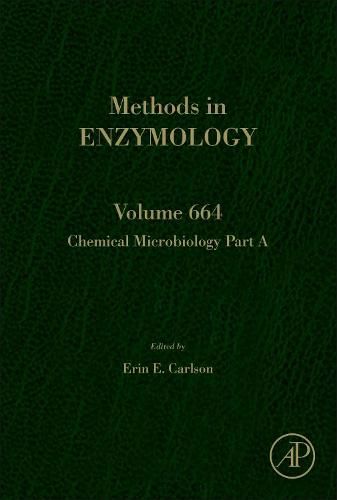Readings Newsletter
Become a Readings Member to make your shopping experience even easier.
Sign in or sign up for free!
You’re not far away from qualifying for FREE standard shipping within Australia
You’ve qualified for FREE standard shipping within Australia
The cart is loading…






Clinical Microbiology, Volume 664 in the Methods in Enzymology series, highlights new advances in the field with this new volume presenting interesting chapters on a variety of topics, including Synthesis of chemical probes to study bacterial adenylating enzymes, Fluoroquinolone-derived fluorescent probes for studies of bacterial penetration and efflux, Combining informatics with ABPP to identify serine hydrolyses in bacteria, A Ligand Selection Strategy Identifies Chemical Probes Targeting the Proteases of SARS-CoV-2, Activity-based probes for bacterial histidine kinases, Metabolomic approaches to enzyme function and pathway discovery, Identification of bile salt hydrolase activity in gut microbiota, and much more.
Other chapters cover Multiplex fluorescence screening and identification using multiplex TMT, Customized Peptidoglycan Surfaces to Investigate Innate Immune Recognition via SPR, Site-Specific Siderocalin Binding to Ferric and Ferric-Free Enterobactin As Revealed by Mass Spectrometry, Proteomics of short-chain fatty acid probes in Salmonella, Development and application of highly sensitive labeling reagents for amino acids, and a variety of other timely topics.
$9.00 standard shipping within Australia
FREE standard shipping within Australia for orders over $100.00
Express & International shipping calculated at checkout
Clinical Microbiology, Volume 664 in the Methods in Enzymology series, highlights new advances in the field with this new volume presenting interesting chapters on a variety of topics, including Synthesis of chemical probes to study bacterial adenylating enzymes, Fluoroquinolone-derived fluorescent probes for studies of bacterial penetration and efflux, Combining informatics with ABPP to identify serine hydrolyses in bacteria, A Ligand Selection Strategy Identifies Chemical Probes Targeting the Proteases of SARS-CoV-2, Activity-based probes for bacterial histidine kinases, Metabolomic approaches to enzyme function and pathway discovery, Identification of bile salt hydrolase activity in gut microbiota, and much more.
Other chapters cover Multiplex fluorescence screening and identification using multiplex TMT, Customized Peptidoglycan Surfaces to Investigate Innate Immune Recognition via SPR, Site-Specific Siderocalin Binding to Ferric and Ferric-Free Enterobactin As Revealed by Mass Spectrometry, Proteomics of short-chain fatty acid probes in Salmonella, Development and application of highly sensitive labeling reagents for amino acids, and a variety of other timely topics.